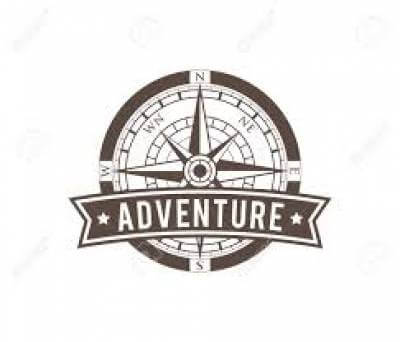Ama Dablam Expedition
Ama Dablam’s main peak (6,812m/ 22,349ft) is often referred to as the Matterhorn of the Himalayas due to its regular pyramid shape. Ama Dablam is in the eastern Himalayan Range 152 km northeast of Kathmandu. There is also a lower western peak (6,170/20,243 ft). The climb to the peak is generally via the southwest ridge with three camps established along the ridge, and camp three positioned below the hanging glacier (the Dablam). Its unique shape makes it attractive to climbing enthusiasts, with April to May and September to October being the best times to scale this amazing peak. A Dablam in Tibetan means necklace, the same as the sacred symbol worn by Sherpa women. Ama means mother, hence the name of this peak means “Mother’s Necklace”.
This is a physically and technically challenging climb due to the shear faces and steep sections of ice and rock to navigate. Climbers must also be accustomed to climbing at high altitudes. There are of course higher mountains to climb, but Ama Dablam offers a bigger challenge and will test your technical skills. Your exposure on the steep faces means there is nowhere to shelter, therefore the weather conditions must be perfect before attempting a climb to the summit. Sherpa Expedition & Trekking will ensure that risks are kept to a minimum and will have accurate weather forecasts on hand.
Mt. Ama Dablam lies in the Khumbu region of Nepal to the south of Mt. Everest and Mt.Lhotse. Everest (8,848 m/29,030) and Lhotse (8,516m/27,940 ft) are the 1st and 4th highest peaks in the world. During your ascent you can be certain of some truly spectacular views of these giants and from the summit even better views. Ama Dablam soars above the well known Tyangboche Monastery, a must see prior to the challenge ahead. A visit to the monastery is an excellent opportunity to do “puja” – meaning prayer in Nepali before climbing to the summit. You will observe that your Sherpa guides will always do this before a climb.
The most popular route for climbing Ama Dablam is the southwest ridge. The climb is normally done with three camps set up along the ridge. Camp 3 is generally established just below and to the right of the hanging glacier- the Dablam. A part of the ascent will be across the Dablam glacier.
The greatest difficulty of climbing these peaks can be altitude sickness, that's why we spend time along the trail leading to Base Camp, and from Base Camp, to frequently climb and ascend to avoid any complications.
Your journey begins at Kathmandu and from there a short flight to Lukla (2840m) and then a trek through the following villages: Phakding (2610m) and Namche Bazaar (3440m) where we will spend the day to acclimatize before heading to higher altitudes. We will follow the trail to Tyangboche (3860m) and then to the start of our climbing expedition at Ama Dablam Base Camp (4600m). We will spend time here to preparing for our climb before making our way up to several higher camps – all the while improving our stamina and lessening the likelihood of altitude sickness. We have allowed a climbing period of 15 days to climb to the summit of Ama Dablam (6,812m). It may be necessary to delay the ascent due to less than perfect weather conditions. The rest of the days will be spent practicing your climbing skills to make certain you have a safe and successful climb.
After successfully climbing to the summit we will return to Namche Bazaar (3441m) and then back to Lukla where we will take a scenic flight back to Kathmandu where we can boast of our success and add another mountain to our climbing journal.
Sherpa Expedition Teams takes care of everything, from permits, fees and all accommodation along the trail. Your safety and enjoyment are always our priority. After more than 40 years (est.1977) in the trekking and climbing business we understand the difference between a merely good experience and a great experience. Our reputation speaks for itself.
ITINERARY
Day 1 : Arrival in Kathmandu and transfer to hotel (1300m).
Arrival at Kathmandu Tribhuvan International Airport, received by Sherpa Expedition and Trekking staff with a warm welcome and transfer to respective hotels with a briefing regarding Ama Dablam Expedition.
Overnight at the hotel with BB.
Day 2 : Trip briefing, paper works and gear checking & sightseeing around Kathmandu valley.
This day after breakfast, at around 8 am, we host a pre-trip meeting at your hotel in Kathmandu and introduce your trek leader/guide. Please seek this opportunity to ask questions about your trek. We will also supply you with our trek luggage Bag, and a Cap. For the meeting, please make sure you bring a passport, three copies of passport-size photos, and a readable copy of your travel insurance policy. During this meeting, please clear the due balance, if any, and sign the legally binding trip form as well as the non-liability disclaimer. Please inform us in advance if you will be arriving late and therefore unable to attend the pre-trip meeting.
After the Pre-Trip meeting and breakfast, your sightseeing trip will start at 9.45 AM in the morning. We provide a private vehicle and a professional tour guide. We visit Boudhanath Stupa, one of the biggest Buddhist shrines in Asia, where we observe Buddhist monks in prayer in the monasteries surrounding the stupa. After Boudhnath Stupa we visit Pashupatinath, the most famous Hindu temple in the country, located on the banks of the holy Bagmati River. Here we see Hindu holy men (sadhus) meditating, pilgrims bathing and occasionally funeral pyres burning on the ghats. We also visit Bhaktapur Durbar Square, which is a collection of pagoda and shikhara – style temples grouped around a fifty-five window palace of brick and wood. The attraction of the Bhaktapur Durbar Square is the Lion gate, the Golden Gate, the Palace of fifty-five windows, art galleries, the Statue of King Bhupatindra Malla.
The rest of our time in Kathmandu is free for further exploration and some last-minute shopping in Thamel area near your hotel.
Overnight at Hotel. Breakfast Included.
Day 3 : Fly from Kathmandu to Lukla(2840m) Overnight stay at Phakding(2610m).
Early morning you will be picked up at the hotel by our guide and escort you to the domestic terminal of Kathmandu airport. Then you board the flight from Kathmandu to Lukla. During the 40 minutes, you enjoy stunning views of Himalayas. After landing at Tenzing-Hilary airport you meet your porter. He will carry your luggage. Then you start your trekking. Today you trek of three hours. It’s easy and gentle. The trail starts passing a Kani (ceremonial gatehouse). It descends steeply then runs level above Kyangma village, which has a large gompa (monastery) and school. After that, you enter Cheplung village. The trail descends through community forest with the sight of Dudh Koshi River. Crossing suspension bridge it’s a short climb around the ridge to Ghat. Leaving Ghat the trail passes a school and complex of mani walls, Chortens and prayer wheels. Then the trail climbs to the hamlet of Chhuthawa. From Chhuthawa after a short walk, you reach to Phakding. Overnight at a mountain lodge.
Breakfast, Lunch & Dinner Included.
Day 4 : Phakdingto trek to Namche Bazaar (3440mapprox6hrs walk).
After a nice morning, walk continues crossing bridges over Dudh Kosi River passing several interesting villages of Toc-Toc,Bhenkar and Monjo arriving at Sagarmatha National Park entrance gate, from here on the river bed for few hours and after the last bridge a steep uphill to Namche Bazaar, at Namche with facilities of good restaurant, pubs, cyber café, post office, and banks.
Breakfast, Lunch & Dinner Included.
Day 5 : Namche Bazaar rest day for acclimatization.
This is the first of the two days set aside for "acclimatization". Health experts recommend us to stay active and moving during the rest day too instead of being idle. We either spend the day taking a day's hike to Thame or visiting Khunde or relaxing and exploring Namche Bazaar itself. Namche Bazaar is the main center of the Everest (Khumbu) region and has government offices, ATMs, Internet cafes, shops, restaurants, a bakery, and a colorful market each Friday evening and Saturday. If we trek a few hundred vertical feet during the day, it will help us to properly acclimatize. Our guides take us to the Tourist Visitor Center near the headquarter of the Sagarmatha National Park where we can observe an assortment of things related to the first Everest ascenders, Sherpa culture and learn about the various plant and animal life of the Everest region.
Breakfast, Lunch & Dinner Included.
Day 6 : Namche Bazaar to Tyangboche(3860 m approx 5 hrs walk)
The trek continues along the rushing glacial waters of the Dudh Kosi with magnificent views of the mountains. We’ll have trekked to an altitude of 3,860 m upon reaching Tengboche. Inside the monastery are incredibly ornate wall hangings, a 20-foot sculpture of Buddha, and the musical instruments and robes of the Lamas. The group will be taken to observe a prayer ceremony either in the evening or in the morning depending on how the trekking goes this day.
Breakfast, Lunch & Dinner Included.
Day 7 : Trek to Pangboche (3900 m) 2 hrs.
From Thyangboche the trail drops to Debuche, crosses suspension bridge on the Imja Khola, and climbs to Pangboche amongst thousands of mani stones. Overnight at Guesthouse. Breakfast, Lunch, and Dinner Included.
Day 8 : Trek to Ama Dablam base camp (4600 m)- 5 hrs.
We trek back down the trail to the bridge at Pangboche and cross the Dudh Kosi before climbing up the far side of the river and following the trail and ridgeline up to the base camp (three and a half hours from Pangboche). Base camp is located in an idyllic spot from which the majority of the route is visible. At an altitude of about 4600m (15,000ft), it provides a comfortable escape from the rigors of the climb. Our porters deposit their loads and leave us here for the next three weeks, with only our Sirdar, Sherpas and culinary staff remaining.
Overnight at tented camp. Breakfast, Lunch, and Dinner Included.
Day 9 : Base Camp preparation; rest day.
Today is another day for acclimatization.
Day 10 : Day 10 To Day 26: Climbing period (summit AmaDablam6,812m)
We do not provide a day-to-day itinerary for the climbing period, as this will be determined by the expedition leader and members. Guides will take a flexible approach based on what fits with climbers’ and their own experience. Typically, the team will spend a few days at the base camp organizing food, practicing rope skills, and acclimatizing before moving above the base camp. It is normal to ‘tag,’ or spend at least one night in Camp 1 (5700m), as part of any acclimatization schedule before returning to the base camp, resting, and preparing for a summit push.
Ama Dablam climb via the southwest ridge
After leaving the base camp old grassy moraine ridges are followed roughly eastwards to a broad saddle 5150m from where we can see the Mingbo La. From the saddle, we ascend easily northwards until the ground steepens at the start of a large boulder field. We may place an advanced base camp at 5400m below the boulder field. The route continues north around the base of the boulder field, and then follows cairns upward to the toe of the southwest ridge. At the end of the boulder field, slabs are crossed and then a short gully ascended, allowing access to the ridge proper in a very exposed position. Easy scrambling on the east side of the ridge leads quickly to Camp 1. There are four or five tent platforms.
From Camp 1 we contour around the snowy bowl (possible alternative site for Camp 1) until we are below two rock fingers. The east side of the ridge is followed, climbing easy mixed ground until a short pitch of “severe” standard leads to the ridge proper. The ridge is narrow in places, with difficult turns on the east side, until the second tension traverse leads to two pitches of “very severe” standard. The route continues on the crest of the ridge for a short distance until we are forced via an awkward step onto the west side of the ridge. The crest of the ridge is regained and easily navigable roads followed to the start of a traverse on the east face, which leads to the Yellow Tower. This 15-meter pitch, just below Camp 2, is one of the hardest pitches on the climb at HVS (5.8) standard. A short section of ridge now leads to Camp 2 (5900m). Camp 2 has very limited tent space (three or four tent platforms) and is extremely exposed. It is sometimes only used to store equipment dump, with expeditions choosing to go from Camp 1 to Camp 3 in a single push.
From Camp 2, the climb skirts a red rock bluff on the east and, after a step-down, follows the snow ridge directly to a tricky traverse east. This leads to a gully between the Grey Tower and the lower rock buttress. We climb the gully until a very exposed traverse line is reached on the west side of the ridge. A short snow slope is ascended, allowing us to reach the start of the Mushroom Ridge. Following this typically involves negotiating some steep snow sections, until Camp 3 (6300m) is reached.
The route climbs the snow and ice slope directly above Camp 3 and to the right-hand side of Dablam. We continue to skirt Dablam on the right, then moving west to gain a small snowfield below the Bergschrund. The Bergschrund is crossed and then the climb heads directly to the ice crest above. This is followed by a magnificent climb to the summit.
(High-Quality Camping Tents will be Provided in each camp) Overnight at tented camp. Breakfast, Lunch, and Dinner Included)
Day 11 - 27 : Trek back to Namche Bazaar (3441 m)- 6 hrs.
We descend six hours to Namche Bazaar (3441m). If we are lucky, we’ll arrive at a market time in Namche. Regardless, there is always fabulous food to be found, including delicious espresso, yak steaks, and chocolate cake with frosting! This market is where lowland porters bearing supplies meet the highland Sherpa and Tibetan people who have journeyed over high passes from many miles away to trade food and supplies for their houses and villages. Enjoy and celebrate your expedition.
Overnight at Guesthouse. Breakfast, Lunch, and Dinner Included.
Day 28 : Trek to Lukla ()2804 m)- 6hrs.
We return to Lukla (3404m), where the trip began, after a six-hour trek. We’ll take time to reflect on the trek as a group, and the personal achievements of all who took part. You’ll also have plenty of time to explore the town.
Overnight at Guesthouse. Breakfast, Lunch, and Dinner Included.
Day 29 : Morning flight back to Kathmandu.
We catch an early morning flight to Kathmandu after our long mountain journey. After reaching Kathmandu, we can take a rest or do some souvenir shopping. If we want to explore any other areas of Kathmandu, we may do that today. Our guides can help you with both souvenirs shopping or sightseeing. There will be a farewell dinner in the evening to celebrate with the clients.
Overnight at Hotel. Breakfast Included.
Day 30 : Transfer to Tribhuwan International Airport.
Your adventure in Nepal comes to an end today! There is nothing to do but trade emails with your travel companions and organize your photos. A representative from Sherpa Expedition and Trekking will take you to the airport, approximately 3 hours before your scheduled flight. On your way home you'll have plenty of time to plan your next adventure in the wonderful country of Nepal.
Breakfast Included.
SERVICES
Cost Included In Your Package:
- Arrival and departure transfer services to and from both Domestic and International flights as per itinerary.
- Assistance at the International airport by Sherpa Expedition and Trekking while arriving and departing in Kathmandu.
- 3-star category hotel accommodation in Kathmandu on B/B plan
- Experienced and government licensed high altitude trekking guide during the trekking and climbing period.
- Schedule Flight Tickets for Kathmandu-Lukla-Kathmandu sector to all climbing members, Sherpa guide, liaison officer and kitchen staff.
- All trekking and mountaineering equipment like; kitchen tent, store tent, dining tents, toilet tents, tables, chairs, and cooking utensils for advance Base Camp and camp two.
- Common climbing equipment (necessary fixed and main rope, ice bars, ice screws, snow bar etc)
- Services of cook and kitchen boy at Advance Base Camp
- 3 meals a day (Breakfasts, Lunch, and Dinners with tea/ coffee) in available tea house/hotel/lodge during the trekking
- 3 fresh meals a day (Breakfasts, Lunch, and Dinners) will be served at base camp, and camp two.
- All food and fuel for Base Camp and higher camps during the expedition for both members and crews.
- Per person 40kg baggage allowance during trekking-up carrying by porter or Yak to climbing the Mt. Ama Dablam.
- Daily Weather Report Services from Seattle based
- Trekking Permit (Sagarmatha National Park entry fee)
- TIMS card (Trekking Information Management System).
- Expedition Royalty and climbing permit of Nepal Government to climb Mt. Ama Dablam(6812M).
- One Experienced, Trained, Government Licensed, and a list 02 Times Summiteer Climbing/expedition Sherpa Guide per client.
- All wages, equipment, medical and accidental Insurances for all involved staff in trekking and expedition.
- Equipment allowances and wages for Climbing Sherpa’s, cooks, kitchen boys.
- Equipment allowances and wages for Government Liaison Officer.
- First Aid medical kits for the Group and the staff.
- Satellite phone carrying by Guide for communication and available for members with the cost of US$ 3 per minute call.
- Appropriate food for high altitude and all climbing crew at base camp and above as required.
- Required fixed and dynamic rope during the climbing period.
- Emergency Oxygen, mask, and regulator provided on requirement of guest with appropriate charge
- All tents for camps 1, 2 and 3 for members and staff.
- Icefall charges by SPCC
- Gamow Bags (Portable Altitude Chamber).
- Sherpa's tents, food for climbing, and insurance for staff
- Helicopter rescue insurance for high altitude climbing Sherpa guide, cook and staff.
- Free assistance service for Cargo clearance and Duties.
- Fresh cooked food and kitchen will be provided at Advance Base camp.
- Trekking and Climbing map of Mount Ama Dablam.
- EPI Cooking gas, the stove will be provided in camps one, three and south col for cooking food, boiling water.
- The generator will be providing for back- up of lighting power and charging electronic tools.
- Transportation of food supply to Base Camp from Kathmandu (Cargo to Lukla and then by porter/Yaks to base camp)
- Our service charge and Government Taxes levied in Nepal.
- Complete pre-departure information
- Flight ticket reconfirmation
- visa extension procedure services (if necessary)
- Farewell Dinner in a typical Nepali restaurant with a domestic culture show in Kathmandu.
- Sherpa Expedition and Trekking T-shirt
Full Board Service Cost Excludes
- Lunch and Dinner during your stay in Kathmandu (except for the farewell dinner)
- Any packed food/snacks, aerated drinks, energy drinks, mineral water, alcohol, cigarettes, chocolates, nutria-bars during the trekking.
- Items of personal nature, Laundry Expenses, Tips.
- Any extra expenses arising out of various/unforeseen situations like natural calamities, landslides, political disturbances, strikes, changes in Government regulations, etc.
- Extra transportation then displays in the itinerary program.
- Any additional staff other than specified.
- Rescue, Repatriation, Medicines, Medical Tests and Hospitalization expenses.
- Medical Insurance and emergency rescue evacuation if required.
- Travel Insurance and helicopter rescue.
- Filming permit (if special camera).
- Personal climbing gears;
- Expenses incurred towards usage of landlines, mobiles, walkie-talkies or satellite phone And Internet expenses
- Nepal entry visa fee (easy to obtain the visa on arrival at Tribhuvan International Airport – Kathmandu). $30 USD for 15-day, $50 USD for 30 Days, and $125 USD for 90 Days visa.
EQUIPMENTS
Travel Documents
- Valid Passport
- Credit Cards
- Pp Size Photo (4 Pieces)
- Insurance Paper And Contact Address.
- Family Members / Company’s Contact Address
Foot Wear
- Kailas / Lasportiva / Millet (Summit Shoe)
- Normal Socks (5-6 Pairs)
- Summit Socks (2 Pairs)
- Trekking Shoes (1 Pair)
- Camp Booties (1 Pair)
- Basecamp Slipper (1 Pair)
Upper Body
- Light Weight Top / Thermo Coat (2-3 Layers)
- Mid Weight Top (2-3 Layers)
- Heavy Weight Top (2 Layers)
- Fleece Jacket (1)
- Gore Text Jacket (1)
- Down Jacket (1)
- Wind Proof Jacket
- Cotton T-Shirt For Base Camp. (2-3)
Lower Body
- Light Weight Long Under Pants (2-3 Pairs)
- Under Wear (5-7 Pairs)
- Mid Weight Long Under Pants (2-3 Pairs)
- Heavy Weight Long Under Wear
- Gore Text Pant. (1)
- Down Pants. (1)
- Water Proof Pant. (1)
Head
- Sun Cap
- Desert Cap
- Balaclava
- Fleece Hat
- Neck Gaiter (2-3)
Hands
- Thin Fleece Gloves (2 Pairs)
- Wind Stopper Fleece Gloves
- Heavy Gloves (Mitten)
- Summit Gloves
Sleeping Bags
- Sleeping Bag - 20 Degree Celsius (For Base Camp)
- Down Sleeping Bag - 20 To -40 Degree Celsius (Extreme Comfort)
- Thermarest Mattress (Cell Foam)
- Thermarest Mattress (Inflatable)
Climbing Equipment
- Climbing Helmet
- Down Suit (Kailas / Marmot / Mountain
- Hardware / North Face / Millet )
- Crampons (Fit with Boot)
- Ice Axe
- Harness
- Atc Guide
- Jummer / Ascender
- Lock Carabiner (3)
- Unlock Carabiner (3)
- Tape Slings (2)
- Prusik Loops (1)
- Snow Goggle
- Head Light (4 Pairs Rechargeable Batteries Recommended)
- Satellite Phone
- Hand Warmer (If Possible)
Bag Packs
- Rucksacks 45L - 55L
- Duffle Bag 90 L -120 L (2 Pieces)
- Water Proof Stuff Sacks Large (2 Pieces)
- Water Proof Stuff Sacks Small (2 Pieces)
Sun Stuffs
- Banana Boat/ Nivea Sun Cream -50 (Spf)
- Lip Guard -20 / -50 (Spf)
- Sun Glasses (UV Protection)
- Glaciers Glasses (UV Protection)
Toiletries
- Hand Disinfectant
- Wet Tissue
- Toothpaste
- Toothbrush
- Soap
- Shampoo
- Garbage Bag
Eating & Drinking
- Water Bottle (2)
- Thermos
- Mug
- Spoon/ Fork
- Bowl
Medical
- Brufen / Ibuprofens
- Antibiotic
- Diamox
- Paracetamol
- Handy Plaster
- Crack Bandage
- Tincture Iodine
Miscellaneous
- Walking Stick
- Pocket Knife (Swiss)
- Umbrella / Rain Coat
GOOD TO KNOW
The Ama Dablam Expedition is a highly sought-after mountaineering adventure in the Khumbu region of Nepal. Ama Dablam, meaning "Mother's Necklace," stands at an impressive height of 6,812 meters (22,349 feet). Renowned for its stunning beauty and technical challenges, here are all the details you need to know about the Ama Dablam Expedition.
1. Location: Ama Dablam is located in the Khumbu region of eastern Nepal, near the popular Everest Base Camp trekking route. It offers breathtaking views of Everest, Lhotse, and other majestic peaks.
2. Difficulty Level: The Ama Dablam Expedition is considered a technically challenging climb. It requires climbers to have prior mountaineering experience, good physical fitness, and technical skills such as rock and ice climbing.
3. Duration: The expedition typically takes around 4-6 weeks to complete, including acclimatization and climbing periods. The duration may vary depending on weather conditions, climbers' abilities, and the chosen route.
4. Permits: Climbing Ama Dablam requires obtaining permits from the Nepal Mountaineering Association (NMA) and the Department of Tourism. These permits ensure the climbers' safety and help in managing the expedition.
5. Climbing Routes: There are several routes to the summit of Ama Dablam, with the Southwest Ridge being the most popular. Other routes include the North Ridge, Northwest Ridge, and the East Ridge. Each route presents its own set of challenges and varying levels of difficulty.
6. Weather: The weather conditions in the Khumbu region can be harsh and unpredictable. It is important to plan the expedition during the appropriate climbing season, which is usually in the spring (April-May) and autumn (September-November). These seasons offer more stable weather and better climbing conditions.
7. Equipment: Climbers need to be well-prepared with proper mountaineering equipment, including ice axes, crampons, ropes, harnesses, helmets, and high-altitude clothing. It is essential to have reliable gear to tackle the challenging terrain and extreme weather conditions.
8. Altitude Sickness: As Ama Dablam is a high-altitude peak, climbers should be aware of the risks of altitude sickness. It is crucial to acclimatize properly and ascend gradually to minimize the chances of altitude-related illnesses. Adequate rest days and proper hydration are essential.
9. Guides and Sherpas: Hiring experienced guides and Sherpas is highly recommended for the Ama Dablam Expedition. They have extensive knowledge of the area, can provide technical assistance, and ensure the safety of the climbers. Sherpas are an integral part of the climbing team and offer invaluable support throughout the expedition.
10. Base Camp: The Ama Dablam Base Camp is situated at an elevation of around 4,600 meters (15,091 feet). It serves as a starting point for climbers and provides a place for rest, acclimatization, and preparation. Base Camp facilities include tents, dining areas, and communication facilities.
11. Safety: Safety should be the top priority during the expedition. Climbers should follow the instructions of their guides, be aware of potential hazards, and have contingency plans in case of emergencies. Regular health check-ups, proper nutrition, and staying hydrated are crucial for a safe and successful climb.
12. Cultural Experience: The Ama Dablam Expedition offers a unique opportunity to immerse yourself in the rich Sherpa culture of the Khumbu region. You can visit monasteries, interact with local communities, and experience the warm hospitality of the Sherpa people.
13. Environmental Conservation: It is important to practice responsible mountaineering and minimize the impact on the environment. Respect the local culture, follow Leave No Trace principles, and carry out all waste responsibly. Leave the mountains as you found them, preserving their beauty for future generations.
The Ama Dablam Expedition is a challenging yet rewarding experience for mountaineers. It requires careful planning, preparation, and experience. Consult with professional mountaineering organizations, experienced climbers, and local authorities to ensure a safe and successful expedition. Embark on this incredible journey and conquer the majestic Ama Dablam!
MAP
PHOTOS/Videos
Departures
Select a departure month
Fill out the form below and a Travel Expert will reach out to create your perfect tour.
FAQS
How do I join an Ama Dablam Expedition?
To join an Ama Dablam Expedition, you can either organize it independently or join an organized expedition through a reputable mountaineering agency. The agency will handle the logistics, permits, guides, and Sherpas.
What is the best time to climb Ama Dablam?
The best time to climb Ama Dablam is usually in the spring (April-May) and autumn (September-November). These seasons offer more stable weather, clearer skies, and better climbing conditions. However, weather conditions can vary, so it is advisable to consult with experienced climbers or mountaineering agencies for the most up-to-date information.
How much does it cost to climb Ama Dablam?
The cost of climbing Ama Dablam varies depending on several factors, including the duration of the expedition, the number of climbers in the group, the services provided by the agency, and the level of support required. It is advisable to contact mountaineering agencies for specific cost details.
Do I need prior mountaineering experience to climb Ama Dablam?
Yes, prior mountaineering experience is essential to climb Ama Dablam. It is considered a technically challenging climb that requires climbers to have good physical fitness, rock and ice climbing skills, and experience in high-altitude climbing. It is recommended to have prior experience of climbing peaks above 6,000 meters (19,685 feet).
What permits do I need for the Ama Dablam Expedition?
To climb Ama Dablam, you will need permits from the Nepal Mountaineering Association (NMA) and the Department of Tourism. These permits ensure your safety and help in managing the expedition. The agency you choose to climb with can assist you in obtaining these permits.
Is it necessary to hire a guide or Sherpa for the Ama Dablam Expedition?
While it is not mandatory, it is highly recommended to hire experienced guides and Sherpas for the Ama Dablam Expedition. They have extensive knowledge of the area, can provide technical assistance, and ensure the safety of the climbers. Sherpas are an integral part of the climbing team and offer invaluable support throughout the expedition.
How physically fit do I need to be to climb Ama Dablam?
Climbing Ama Dablam requires a high level of physical fitness. It is recommended to engage in regular cardiovascular exercises, strength training, and endurance-building activities before attempting the expedition. A good level of fitness will help you cope with the demanding terrain and altitude.
What are the risks involved in climbing Ama Dablam?
Climbing Ama Dablam involves risks such as altitude sickness, avalanches, rockfall, crevasses, and extreme weather conditions. It is essential to be aware of these risks, prepare accordingly, and follow the guidance of experienced guides and Sherpas to mitigate them. Safety should always be the top priority.
Are there any rescue services available on Ama Dablam?
There are helicopter rescue services available in Nepal, but they are subject to weather conditions and other factors. It is important to have a contingency plan in case of emergencies and ensure that your travel insurance covers helicopter rescue.
Can I climb Ama Dablam solo?
While it is possible to climb Ama Dablam solo, it is not recommended, especially for those without extensive mountaineering experience. Solo climbing increases the risks and challenges involved. It is safer to climb with a team and experienced guides.
Latest Traveller’s Reviews
Travel experiences of our clients who recently returned from their trips.
100%
Based On 3 Reviews
Kecaj Zsuirad
United States
March 14, 2023
A Thrilling Ascent to the Jewel of the Himalayas
Our Ama Dablam expedition was a thrilling and unforgettable journey to the jewel of the Himalayas. The iconic pyramid-shaped peak, with its sheer granite walls and breathtaking views, provided us with a mountaineering experience like no other.
Eleonora Topornicka
Aruba
April 14, 2022
Awe-Inspiring Beauty and Unforgettable Memories
The Ama Dablam expedition exposed us to awe-inspiring beauty and created unforgettable memories. From the mesmerizing views of Everest and surrounding peaks to the serene landscapes and hanging glaciers, every moment on the mountain was a testament to the grandeur of nature and left us in awe.
Iris Febres
United States
April 21, 2021
Experienced Guides Who Made the Impossible Possible
The experienced guides on our Ama Dablam expedition were instrumental in making the impossible possible. Their extensive knowledge of the mountain, expert guidance, and unwavering support allowed us to overcome challenges and reach the summit, ensuring our safety and success.
People Considering This Package Right Now Check availability


























